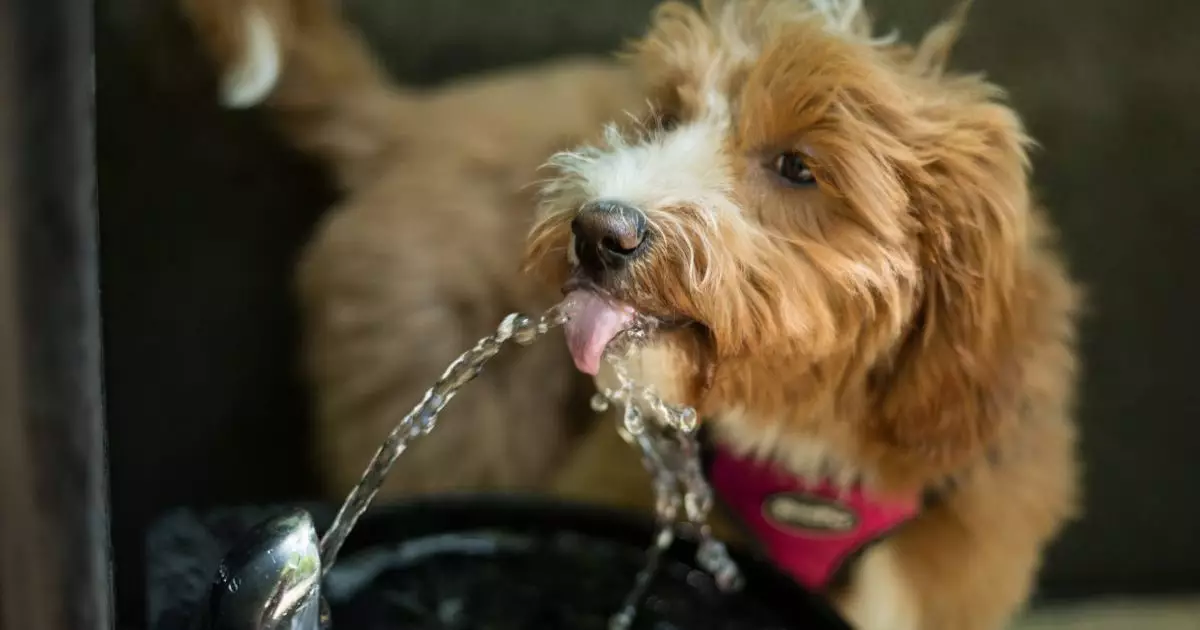Just like humans, dogs require adequate hydration to thrive, particularly during sweltering summers or periods of vigorous activity. Water isn’t merely a commodity for your furry friend; it plays a crucial role in metabolism, digestion, and overall physical well-being. However, the challenge lies in the fact that dogs cannot express their thirst verbally, which puts the onus on pet owners to proactively ensure their dogs are adequately hydrated. Understanding the subtle signals your dog sends can transform you from a passive observer into an active caretaker of their health.
Recognizing the signs of dehydration is paramount. Unlike humans, dogs may not display overt signs of thirst until it’s too late. This makes it crucial for you to be vigilant and observant. A slight change in behavior, physical appearance, or energy levels can indicate that your dog is in need of replenishment.
Understanding Dehydration: Tests You Can Perform
Equipped with knowledge from veterinary experts, like Dr. Cathy Alinovi, pet owners can employ simple yet effective tests to assess their dog’s hydration levels. One prevalent method is the skin elasticity test. Gently lifting the skin on your dog’s neck should allow it to return promptly to its original position if hydration is adequate. Conversely, if the skin remains raised or only slowly returns to place, it is a clear indication your dog needs more water.
Another effective check involves examining your dog’s gums. This test is relatively straightforward—just touch the gums with your fingers. They should feel moist and slightly slick if hydration is optimal; dry or tacky gums signal a need for water. These quick assessments empower you to take timely action if your dog appears dehydrated.
Innovative Ways to Encourage Hydration
Sometimes, dogs don’t instinctively seek out their water bowls, despite needing hydration. It becomes the owner’s responsibility to encourage drinking through incentivization and creative strategies. One exciting solution is integrating products such as the Spleash leash accessory into your outdoor adventures. Not just any accessory, Spleash holds up to 12 ounces of fresh water, allowing you to offer hydration conveniently during walks, hikes, or outings to the park.
This multifunctional tool can quickly transition from a drinking cup to a spray nozzle, allowing you to deliver fresh hydration directly into your dog’s mouth or even cool them off while maintaining a safe distance. It’s a hassle-free way to keep your furry friend refreshed and can be a game-changer for on-the-go pet owners.
Food Matters: Hydrating Your Dog from Within
Altering your dog’s diet can also play a significant role in keeping them hydrated. Adding water or low-sodium broth to their meals can go a long way in enhancing hydration without altering their eating habits drastically. The deliciousness of homemade broth can catalyze your canine companion’s interest in hydration; they’re more likely to lap it up compared to plain water.
Additionally, introducing fresh, moisture-rich foods into their diet can improve hydration levels. Fruits like watermelon and berries serve dual purposes—they’re hydrating and packed with nutrients. Similarly, crunchy veggies such as carrots, cucumbers, and apples are not just healthy snacks; they also add water content to your pet’s daily intake. According to Dr. Alinovi, a shift towards wet dog food or homemade meals can provide more moisture than traditional dry kibble.
Making Hydration Fun and Enjoyable
Creativity can make hydration fun for your dog, turning a necessary task into an enjoyable activity. One simple yet effective idea is to give your dog ice cubes, which not only serve as a tasty treat but can also provide both hydration and entertainment. Alternatively, turning the garden hose or sprinkler into a plaything can encourage casual water intake while your dog has fun splashing around.
Engaging your dog in a “bottle game” can also be an amusing method to promote drinking. By filling a plastic bottle with water and loosely capping it, you can encourage your dog to figure out how to drink, offering both stimulation and hydration. Always supervise this activity to prevent any risks associated with choking hazards.
Your Role in Promoting Hydration
As a dog owner, you bear the responsibility of watching for signs of dehydration and taking proactive steps to ensure your pet stays hydrated. Doing so not only promotes good health but also contributes to a happier and more active lifestyle for your beloved furry companion. By adopting simple tests to assess hydration levels and utilizing innovative strategies to encourage water consumption, you’ll equipped your dog for a life filled with energy and joy, especially during those summer months. Through vigilance, creativity, and the right tools, you can ensure your canine stays cool, refreshed, and ready for adventure.

